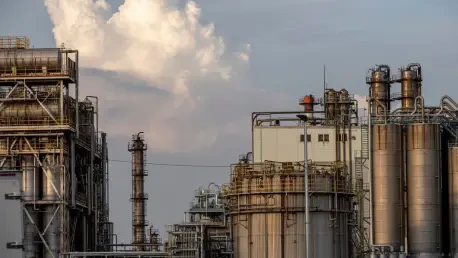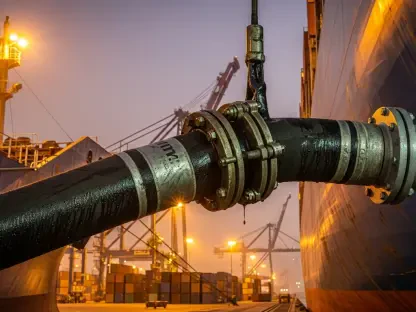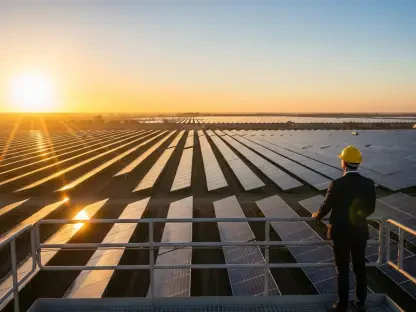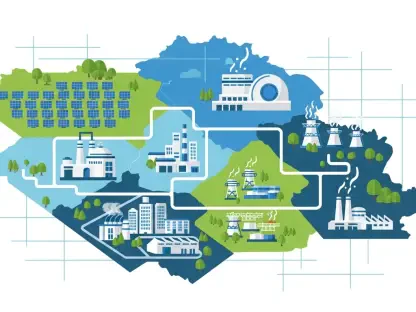What drives a nation to hoard vast quantities of crude oil while its refineries operate at near-record levels, and how does this strategy impact global energy markets? In China, the world’s largest oil importer, this paradox unfolds as a calculated approach, balancing immediate energy demands with long-term security. Picture millions of barrels flowing into storage tanks, even as refineries churn out fuel at an unprecedented pace. This intriguing duality raises questions about global energy markets and the motivations behind such a bold approach. The story of China’s oil stockpiling offers a glimpse into a complex dance of economics, geopolitics, and foresight.
Why Is China Hoarding Oil in a Booming Refinery Market?
At the heart of this enigma lies a striking contradiction. Chinese refineries are processing crude oil at staggering rates, yet the country continues to amass surpluses for storage. This behavior defies simple logic: why stockpile when production is already high? The answer seems rooted in a deeper strategy, one that prioritizes resilience over short-term efficiency in a volatile global market.
This stockpiling trend isn’t just a quirk; it’s a deliberate move by the nation to shield itself from unpredictable price swings and supply disruptions. As global oil dynamics shift, often influenced by geopolitical tensions or sudden policy changes from major producers, China appears to be playing a long game. The decision to store excess crude reflects a mindset of preparation, ensuring that domestic needs can be met even if external conditions turn unfavorable.
The Big Picture: China’s Role in the Global Oil Landscape
China’s influence on the global oil market cannot be overstated. As the top importer of crude, its every move sends ripples through international supply chains, affecting everything from gasoline prices at local pumps to the profitability of oil-exporting nations. The strategy of stockpiling, even during high refinery output, underscores how a single country’s policies can shape energy security worldwide.
Beyond mere economics, this approach ties into broader geopolitical undercurrents. Tensions in key oil-producing regions often lead to market instability, and China’s reserves act as a buffer against such shocks. For nations and companies reliant on stable oil prices, understanding these actions is crucial, as they directly impact trade balances and fuel costs across borders.
Moreover, this trend highlights a shift in global power dynamics. By maintaining significant stockpiles, China positions itself not just as a consumer but as a stabilizing force—or a potential wildcard—in energy markets. This dual role amplifies its leverage in negotiations with suppliers and competitors alike, reshaping traditional alignments.
Unpacking the Numbers: Stockpiling Amid Refinery Growth
The scale of China’s oil accumulation becomes clear when diving into the data. In a recent month, refiners processed 14.85 million barrels per day (bpd), marking an 8.9% increase compared to last year. Despite this surge, imports stood at 11.11 million bpd, combined with domestic production of 4.27 million bpd, creating a total availability of 15.38 million bpd. This left a surplus of 530,000 bpd, much of which likely flowed into storage.
Looking at longer-term trends paints an even starker picture. Since early this year, the average surplus has hovered around 980,000 bpd, with consistent buildups month after month. This isn’t a fleeting decision but a sustained effort, showcasing a commitment to bolstering reserves regardless of immediate processing capacity.
Price signals play a pivotal role in this strategy. When Brent crude dipped to $58.50 per barrel earlier this year, imports spiked as refiners seized the opportunity to buy low. Yet, volatility soon followed, with prices climbing and major suppliers like Saudi Arabia hiking rates for subsequent shipments. These fluctuations illustrate how China times its purchases to maximize value, even as it ramps up refinery activity.
Expert Insights: Decoding China’s Strategic Play
Industry analysts have weighed in on this intricate balancing act, shedding light on the rationale behind the stockpiling. According to market observers, China’s ability to juggle high refinery runs with reserve accumulation reflects a sophisticated understanding of global trends. The consensus points to a desire for flexibility—having surplus oil on hand allows refiners to dial back imports if prices spike unexpectedly.
This perspective is grounded in real-world behavior. During periods of low prices, such as earlier dips in Brent crude, import volumes surged almost overnight, as if guided by an unspoken rule to capitalize on bargains. Such agility suggests that state planners and private refiners alike are attuned to market signals, prioritizing long-term stability over short-term gains.
Further analysis reveals an additional layer: stockpiling isn’t just about economics but also about energy security. Experts note that these reserves serve as a safeguard against disruptions, whether from natural disasters or international conflicts. This strategic foresight positions China to weather storms that might cripple less-prepared nations, adding a dimension of resilience to its oil policy.
Navigating the Future: Implications of China’s Oil Strategy
For stakeholders across the energy spectrum, China’s approach carries significant consequences. Refiners worldwide must keep a close eye on global price trends, such as Brent crude fluctuations, to predict shifts in Chinese import patterns. Adjusting processing rates in response to these cues could mean the difference between profit and loss in a competitive market.
Policymakers in other nations might take a page from this playbook, viewing stockpiling as a viable tool for bolstering energy security. Building similar buffers could protect against market shocks, especially in an era of increasing uncertainty. This lesson in preparedness offers a model for balancing domestic needs with global realities.
Investors, too, face a shifting landscape. External factors like pricing decisions from major suppliers or rising geopolitical tensions could sway China’s import volumes and fuel export growth, particularly in diesel and gasoline. Weighing these variables becomes essential for those betting on energy markets, as China’s actions often set the tone for broader trends.
Looking back, China’s dual focus on stockpiling crude oil and pushing refinery rates to new heights revealed a nation adept at navigating complexity. The interplay of surplus accumulation and market timing showcased a meticulous strategy, one that balanced immediate output with future safeguards. For global players, the takeaway was clear: adapting to this approach required vigilance and foresight.
The path forward demanded proactive steps. Nations and companies needed to monitor price signals and geopolitical shifts with precision, ready to adjust strategies at a moment’s notice. Building reserves, much like China did, emerged as a prudent measure against uncertainty. Ultimately, the lesson from this period was one of preparation—ensuring that energy security remained a priority in an unpredictable world.









